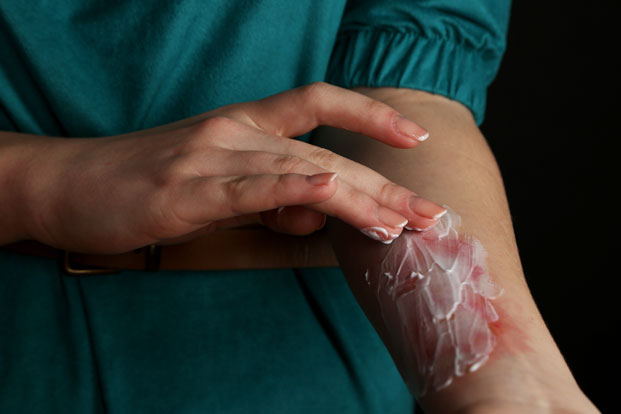Consider these three common myths you may have heard. And if you’ve heard otherwise, kudos to you.
Myth Number One: Have you been bitten by a snake on a hike? It’s helpful to suck the venom out to decrease the amount of venom entering the body.
Myth Number Two: Trying to prevent colds? Load up on vitamin C. This necessary nutrient can prevent winter sniffles.
Myth Number Three: Want to prevent Alzheimer’s? Stop at your favorite drugstore and purchase Ginkgo Biloba. Not only can this help to prevent Alzheimer’s, but it also just might improve your cognitive abilities.
If you’ve believed any of these myths, you’re not alone. These are just three of the many myths that people believe when it comes to home remedies for health and wellness. Unfortunately, evidence has shown different and startling conclusions when it comes to do-it-yourself options like these.
Take a look at these six common home remedies that simply don’t work (including the ones we just mentioned). You might be surprised.
1. Suck the venom out of a snakebite.
We often hear that in an emergency, we should suck the venom out of a snakebite. And on first glance, this would make sense. However, this is the last thing you want to do.
This is just one of many myths circling the globe when it comes to poisonous snake bites. In addition to eliminating this option, the Mayo Clinic says there are a number of other mistaken beliefs to take into account.
The first involves the use of a tourniquet. If you’re bitten by a snake, don’t try to make a tourniquet or use ice to reduce swelling. This is not good for your health.
Further, don’t use body-altering substances like caffeine. This may make venom spread through the body more quickly. (Sorry folks, alcohol applies, too.) And don’t try to catch the snake. Just remember what it looked like to give a description to healthcare professionals.
So just what should you really do in this situation?
If a snake bites you, try to stay calm and get out of harm’s way. In other words, don’t try to pick up the snake. Bad choice.
Try to keep the wound at or below heart level and remove tight articles of clothing or jewelry to prevent swelling complications. Finally, clean the area without flushing it with water. Then try to cover it, and call 911 as soon as possible.
2. Put butter on a burn.
Many of our grandmothers told us to put butter on burns. However, evidence stacks up against this once-common belief. In fact, butter may make it tough for the burn to heal.
The real way to treat a burn is a lot more practical. According to the University of Rochester Medical Center, the proper thing to do is to allow cool water to run over the burn. And after rinsing it, dry the burn and cover it loosely. If blisters, discoloring or infection are present, seek the help of medical personnel.
3. Vitamin C protects against colds.
It’s no secret that the body needs vitamin C. But this concept does not apply to the popular belief that vitamin C can prevent colds. (Don’t worry — it surprised us, too.) Research shows that, alas, it does not. Megadoses of vitamin C supplements may cause stomach distress, insomnia and even kidney stones.
However, there is truth to the belief that vitamin C can assist with the cold itself. Research shows that vitamin C could shorten the duration of a cold. That’s a good thing if you’ve got the sniffles.
4. Ginkgo Biloba promotes weight loss and memory improvement.
When it comes to memory improvement, one popular theory is that ginkgo may be a secret source of cognitive enhancement. Unfortunately, experts say that this isn’t true.
Research shows that ginkgo has no effect on memory improvement, and it is not helpful in protecting the body against Alzheimer’s disease. This has been found to be true, regardless of age and the dose administered.
Many people say that ginkgo is an effective and even miraculous solution to the battle of the bulge. Unfortunately, research on this concept is lacking. So don’t believe it until scientists tell us otherwise.
5. Hydrogen peroxide is good for cuts.
Most of us were taught to put hydrogen peroxide on cuts. The bubbly effect was seen as a “cleanser.” But these days, this method of treatment is out of date.
According to Consumer Reports, the same thing that does away with bacteria may cause harm to healthy cell tissue. (And they say this general rule of thumb can apply to alcohol and iodine as well.) Though this doesn’t wreak much havoc on the body, it can delay healing.
Instead, experts recommend using good old soap and water, which is easier on the skin. Remember to steer clear of antibacterial soap. The FDA says it may do more harm than good.
6. Foot patches draw the poison out of feet.
Detoxifying foot patches have become a popular fad among those looking to restore health. Unfortunately, medical experts say that research has not been conducted to prove this fad to be effective.
According to Dr. Stephen Barrett, studies haven’t currently backed this claim. Plus, the liver performs the body’s major detoxification, followed by release through kidney filtering and then urine — not the feet.
Further, some companies promoting these products have been proven to be fraudulent in that they have used deceptive advertising practices. When tested, the products of one of these companies had the same result through distilled water absorption as foot pads applied to the feet.
So until research can back this claim up, steer clear of it. Don’t waste your money on this concept until research backs it.

Leave a Reply